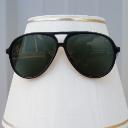Yahoo Answers is shutting down on May 4th, 2021 (Eastern Time) and beginning April 20th, 2021 (Eastern Time) the Yahoo Answers website will be in read-only mode. There will be no changes to other Yahoo properties or services, or your Yahoo account. You can find more information about the Yahoo Answers shutdown and how to download your data on this help page.
Trending News
Multiple microphones input to one audio input jack? Splitter?
I have a nikon D3200. Its a nice and easy to use camera but I'm not a huge fan of the tools and such that can be used with it. I like the idea of having an audio input on the camera but I am not sure what its limits are. So, I want to have 2 microphones plugged in and both recording what I am filming (More depth to the sound and more options as to what I can record) I want to conduct interviews with this camera. I have two handheld Audio Technica microphones that have a 3.5mm jack that plug into my camera. I would really prefer to be able to use both at the same time and have both plugged into the cameras single audio input jack. How would i go about doing this? Use a splitter and just plug the mics into the ports or what? I don't have many options as to what I can buy. I will be in another country (specifically Haiti) and electricity and all that isn't an option. Thanks!
7 Answers
- keerokLv 75 years ago
If your camera's mic input is stereo, I can imagine splitting the two signals into left and right tracks might do the trick. If it's mono, I'm worried that splitting the mic input into two might cause lower mic levels and more noise.
You could use a digital audio recording device for each mic then combine everything (2 audio and 1 video) in the computer but that would be a daunting task (and an expensive one).
There might be a small enough portable mic mixer (try Behringer) that can handle two mics (with volume control for each) and feed the signal to one mic port.
- ?Lv 75 years ago
Not a splitter. An "adapter". You did not tell us which mic(s) you'll be using but Audio Technica mics that use a 3.5mm connector are probably low-end mics... Not the best choice.
Ideally, an XLR adapter - see juicedLink and BeachTek. Since we don't know which mics you plan to use we don't know if you need phantom power. Condenser mics need power - good mics can use phantom power. The good XLR adapters will use a battery (like a 9-volt) to provide phantom power and other XLR adapter features.
There is no single best mic. Sometimes a condenser mic is appropriate. Sometimes dynamic mics are best for the scene. Sometimes a stereo mic... and sometimes a wireless mic...
- qrkLv 75 years ago
Your camera records in stereo. You can connect one mic to the left channel, the other mic to the right channel. I make my own adapters. Easy to do if you have a soldering iron. Radio Shack still sells parts, or you can order them from Digi Key.
Do not parallel the mics as that will drop the sensitivity and you have no control of the individual levels in post production. When I do theatre video work, I have the right camera audio channels connected to the mixer board, the left channel goes to a house mic to record audience and some reverb from the PA/theatre. In post production, I usually drop the house audio by 6 dB and time shift the house audio by 30ms due to the time lag. I do use a portable mixing board which makes life much easier.
- spacemissingLv 75 years ago
DO NOT try to do it with simple Y cords.
You would need a mixer with mic-level output.
They exist, but are difficult to find.
A normal mixer and an audio attenuator (30 to 40 dB) would work,
but don't expect to get the best results that way
- How do you think about the answers? You can sign in to vote the answer.
- Anonymous5 years ago
You need the opposite idea from a "splitter". To balance several mics of different sorts you need a "mixer" so that you can adjust the gain (volume level) from each mic and also not risk mics interfering with each other. There are portable battery operated mixers on sale.
- IridflareLv 75 years ago
It's common to record interviews with just one camera and mic - record the interviewee answering the questions and then record yourself asking them. Finally, you record some reaction shots of yourself agreeing / disagreeing or whatever with the interviewee's responses (the "noddies"). Edit things into the right order and voila! It helps if you make notes of the reactions you need to record, as well as any supplementary / unscripted questions you asked during the interview.









